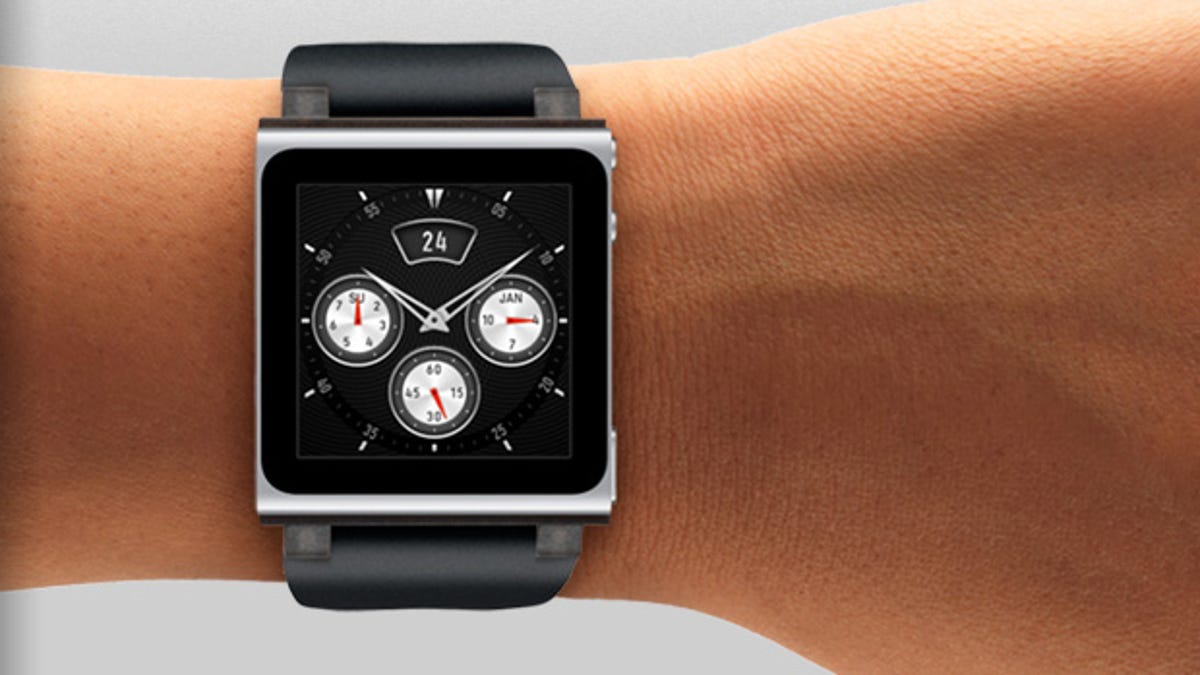For an iWatch to kick butt, Apple must innovate in batteries
If the company is indeed working on a watch-size device with the bells and whistles of a smartphone, battery life could prove a challenge.

If Apple is hard at work on an "iWatch," it will have to overcome battery issues bedeviling existing smartwatch makers.
This new crop of wrist devices has a lot more in common with smartphones than your old Timex. They have increasingly large displays, and can ferry over notifications and other data, acting as a second screen of sorts for your smartphone. For many of the latest models, that extra utility is not without a compromise: You've got to plug it in at the end of the day.
Charging a smartphone every day can be an annoyance, but most people are used to it. Watches are a different beast. Today's digital watches are designed much the same way they were 20 years ago, to last years at a time between battery replacements. That's held true for so long because they do little besides tell time.
While companies are doing all they can to reduce the power consumption of chips and screens, the fact remains that batteries haven't undergone the same technological sea change as other major portable device components. There haven't been the kind of advances in capacity that would let devices be used for days or even weeks on a single charge while keeping things small.
Bigger is better
On the smartphone front, manufacturers have responded to the power problem by increasing the capacity of the batteries that are shipped in phones, said Satoru Rick Oyama, a principal analyst at IHS Global. Companies have gone from 1,000mAh batteries to 1,500mAh, and will soon go with 2,000mAh as the standard, Oyama said. These higher-capacity batteries come at a price -- the packs often are larger.
That capacity ramp-up has worked out because manufacturers like Samsung have started making their smartphones bigger, providing more room inside for batteries. There are also extremes like Motorola's Droid Razr Maxx, which comes with a 3,300mAh battery, an 85 percent increase over the battery that shipped with the standard Droid Razr. That's been fine for something that can go into a pocket or purse, but there's a limit when it comes to a limb on the human body.
One of the clearest examples of how well that works when scaled down is Apple's sixth-generation iPod Nano, which the company actually marketed as a watch, with built-in watch faces. Inside was a tiny 105mAh battery that was geared for 24 hours of music playback. But in day-to-day use, that ended up being just a few daysif you used features like the built-in FM radio and pedometer. The latest model, released last October, did away with the watch idea completely.
Smartwatch upstarts like the Pebble, which raised more than $10 million on Kickstarter, got around this issue by going with a different screen technology that uses less power. Instead of a backlit LCD panel, Pebble went with an e-paper display and low-power Bluetooth, which together require less juice and mean that the watch can be used for up to a week between charges.
In other words, if we're expecting a large, bright LCD screen, constant connectivity, and some of the same capable innards we're getting in iPhones and iPods, we can't ignore the issue of integrating a battery large enough to keep things running.
What's now; what's next
In the world of batteries, lithium ion and lithium polymer remain the most commonly used technologies, though lithium polymer is becoming more popular.
The two technologies are similar, but the polymer version has certain benefits that have made it increasingly attractive for use in portable gadgets. Lithium polymer is more expensive than lithium ion, but is safer, and can be manufactured into a variety of different shapes. By comparison, lithium ion has been limited to cylinders or flat, rectangular boxes. This attribute has led to some of the advances in the types of form factors manufacturers have made.
"For now, the go-to for the foreseeable future will still be lithium polymer batteries," said Allan Yogasingam, a technical research manager at UBM Tech Insights. "The reason for that is that li-polymer has a strong flexibility that allows products like tablets and notebooks and now ultrabooks to feature lighter and slimmer designs. After that, it's a bit of an 'arms race' to see which battery technology will have the most appeal to consumer electronic manufacturers."
Among the frontrunners in battery technology is lithium imide, Yogasingam said. It has higher density than the lithium polymer batteries, is more durable, and is better at recharging -- two major benefits for something that will be on the go. (Find out more about lithium imide here.)
Down the road there's also the promise of lithium air batteries. IBM has been developing lithium air batteries chiefly to power electric cars, but such batteries should work in mobile devices after being scaled down, said Michael Karasick, vice president and director of IBM's Almaden Research Lab in San Jose, Calif. He noted that such technology will allow batteries to either be one-tenth their current size or last 10 times as long. The rub? It could take years before they're available, Karasick said.



